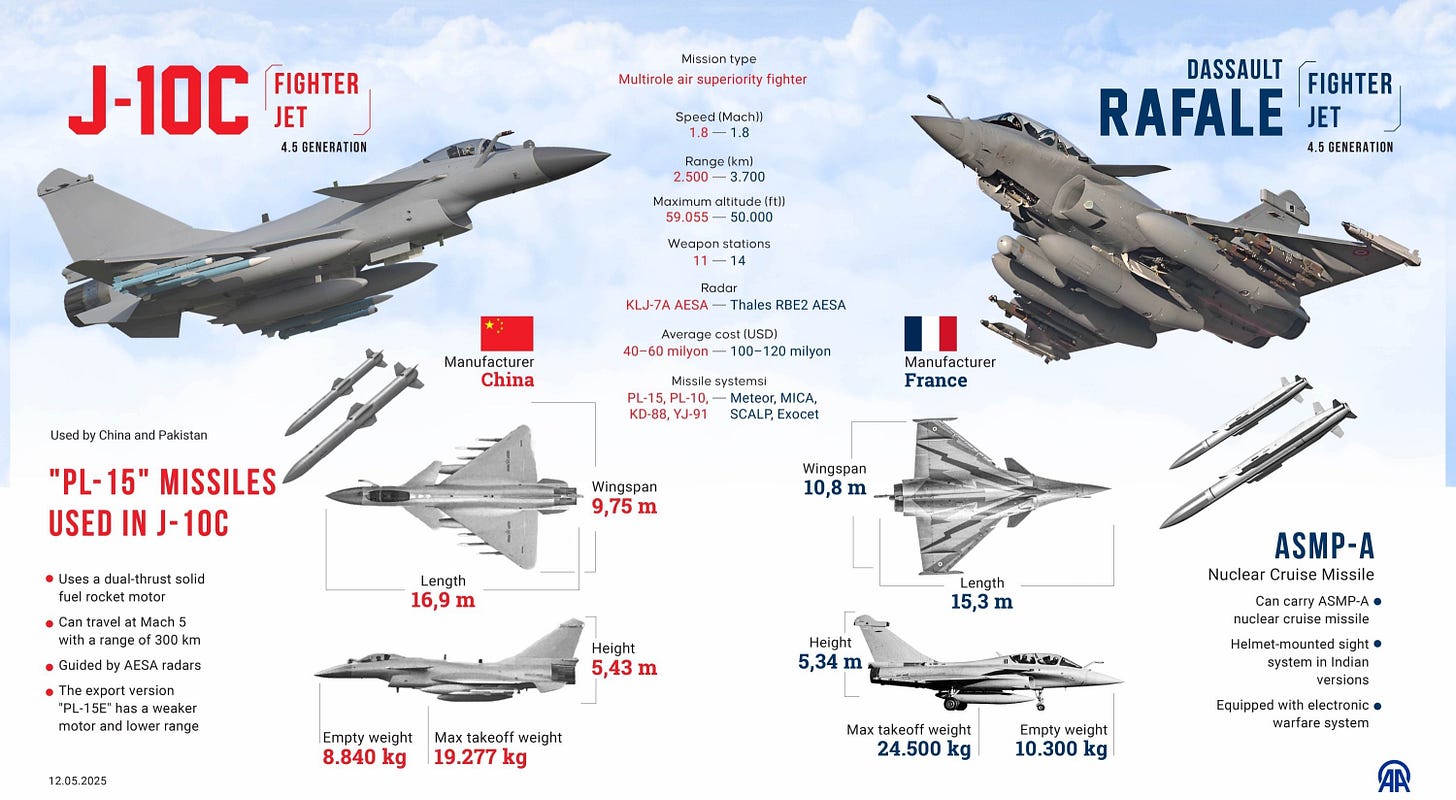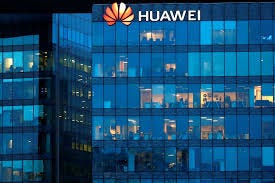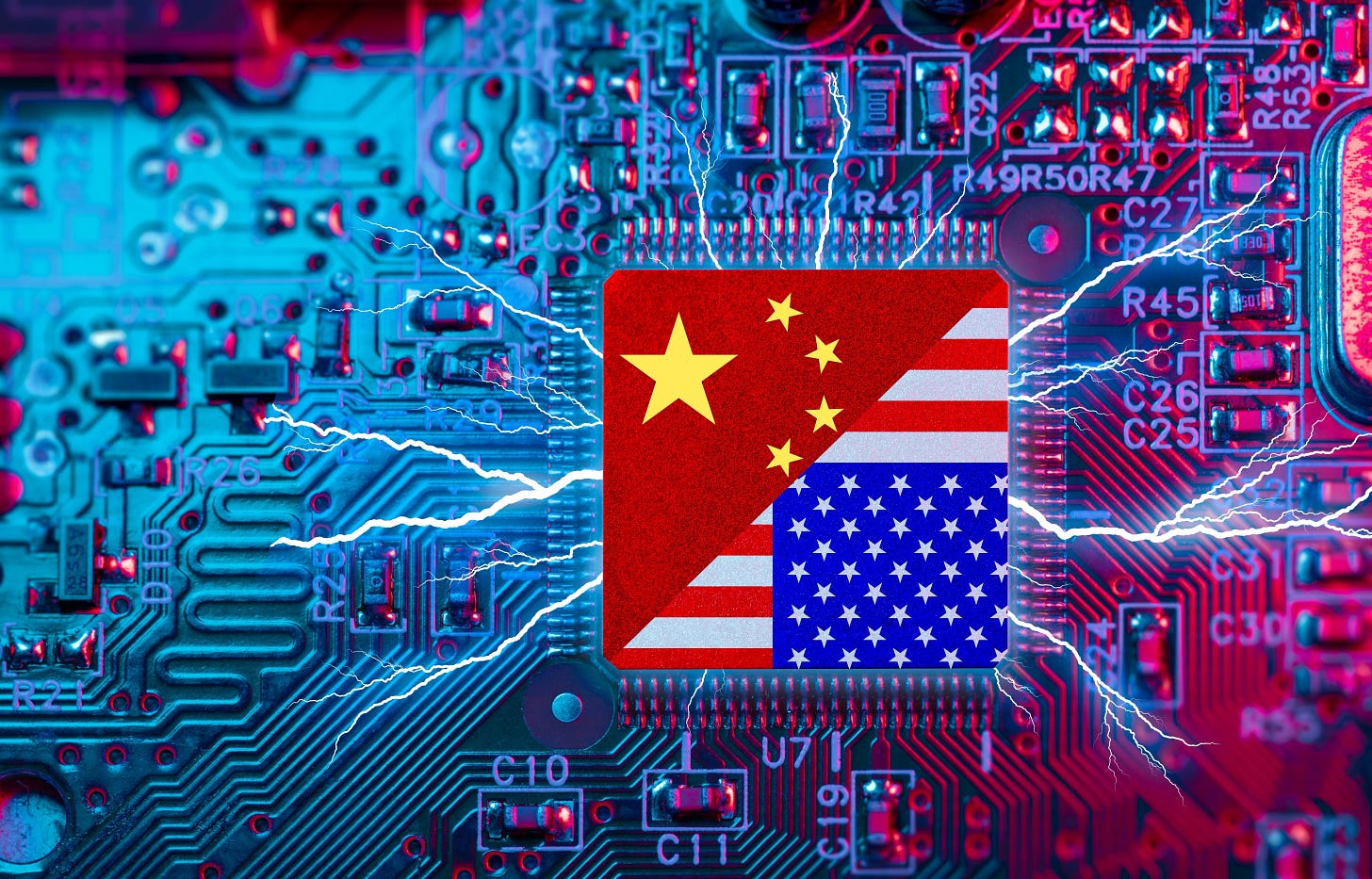This will be a stream-of-consciousness article, rather than a well-structured one, which I will cover some geopolitical and other events, rather than waiting weeks to unfold, in line with my previous articles. If you want further and deeper context, just visit The Fourth Option section of my Substack.
Merely a few weeks ago, a PLA propaganda quote came to mind, which aligns with the famous Western meme, "While you're playing checkers, we are playing chess”, and the PLA’s propaganda goes a little bit harder.
We transform every bottleneck into a breakthrough.
Outlandish from a Western, outsider, or just grounded perspective, the results are undeniable at this point, as this is partially true. Every bottleneck inflicted by the West tends to be worked around or overcome by China as a whole. While one can go on extensive musings on China’s technological leaps in many important industries every 10-year cycle, no other industry is as critical and important as semiconductors, chips, and AI.
I have been a massive critic of the Chip exports ban, arguing, forecasting, and being proven correct on how absurdly harmful to the long-term technological lead of the West this decision would be. After months of coping by Silicon Valley technologists induced by the release of DeepSeek frontier model, exposure to sunlight acted as a powerful disinfectant, and you have, basically, everyone stating the facts.
Eric Schmidt from Google’s fame, Bill Gates, and even Sam Altman himself all stated recently the same, the West is not much further ahead in terms of AI development, and gauging it is almost impossible, a stark contrast with over 2 years of stating China was so far behind were not real competitors. A quote from Eric’s article.
"The country’s recent breakthroughs, however, illustrate that such sanctions instead fueled efforts by Chinese entrepreneurs to keep training and commercializing A.I."
While I am a Whale enthusiast (meaning I have huge faith in DeepSeek's technical resourcefulness and ability to achieve their AGI goals), all this couldn’t possibly be just because of the Whale, could it ?
As the stars aligned in an obscure way, Huawei made multiple impacts in the span of weeks. iFlytek, a state-owned Chinese tech firm, trained a Large Language Model entirely on Huawei’s chip, a model that matched the performance of frontier models at the time, but that is not the headline. It is the performance boost in just one year, from 20% to 80% efficiency.
Algorithmic breakthroughs and efficiency gains are bounded by mathematics and code (ingenuity too), not hardware, as evidenced by DeepSeek's astounding architectural breakthroughs on limited hardware. With enough R&D investment, Huawei could equate its software (CANN) to Nvidia’s CUDA, the reason Nvidia dominates “everything AI”, a few hundred engineers and 12 months would suffice to have CUDA parity. Comes in the second hit for this systemic change in tone.
Western analysis is permeated with a myriad of short-sighted, hubris-fueled thoughts, and a particularly harmful analytical point is the insistence on believing China would never achieve any sort of advanced semiconductor manufacturing. The running joke has been the impossibility of China creating a fully domestic supply chain, with every step being done by a domestic company. Semiconductor manufacturing and chips are the most complex supply our civilization has.
Yet… Huawei is at the cusp of building an entirely domestic, in-house semi supply chain.


If you are bored and want to go down a rabbit hole, you can go back into many of my Beyond Mathematical Odd articles in Things Hidden, and you will see the increasing hybrid war in the chip manufacturing world. Fires, hacking, sabotage, you name it, it has occurred since 2017. But not of cloak and dagger is what hybrid war is made of. Former ASML head scientist Lin Nan drives China’s latest EUV breakthrough. Or the case of the Russian spy infiltrating ASML. This has been a long time coming.
There has been one high-profile CEO who had his mind in the right place, with the correct timeframe in mind. Nvidia’s CEO Jensen Huang. There is a substantial number of analysts, writers, and social media commentators who have criticized Huang for his willingness to often modify his cutting-edge chips and AI-centered GPUs for the Chinese market. The US government enacts sanctions, and Nvidia quickly adapts to them. It has been the case for years, it is the case right now.
Not only is China a big Nvidia partner, it is also one of Nvidia's biggest markets, but this is not a “profit-driven” choice, rather, it is foresight for long-term survival. As things stand, Nvidia is the only game in town for AI-anything. From gaming, to individual case use, to industrial-scale, you are using Nvidia for AI-anything. I use it. The Machine Learning rig I gave up on building used 2 of Nvidia’s best GPUs at the time.
Nvidia plans to build a Research and Development center in Shanghai for existential purposes, not mixed alliances or profit. If Nvidia is not present in China with a larger footprint in Asia, that vacuum will quickly be taken by Huawei, and from there, it would take the Chinese company roughly 3 years to become a global threat to Nvidia's business, regardless of sanctions, which Huang made it clear to Trump’s administration, given that they just rescinded the horrendous backwards Biden’s AI restriction (that the current administration kept up until Huang met with Trump).
Why these events are so important is because they are central tenets to the ongoing trade war, which was halted by Bessent going directly to the Chinese, as the current policy decisions were made with almost decade-old knowledge of China’s diverse industrial ecosystem. It was painful for both countries. As trade negotiations take place from a new starting point, as the world's leading superpowers try to negotiate “fair deals” for themselves, the Chips war may be the card that makes the entire thing unfold.
There are no easy plays anymore. Either the US allows China to use American technology for the development of AI and all that entails, thus able to slow the process down somehow while maintain large marketshare, disrupting Huawei’s ambition, or it enacts ever more aggressively policy and accelearte’s China technology even more, which is exactly what happened in the past 5 years.
The long game
As briefly mentioned a couple times in The Fourth Option, China plays an exceedingly long game, layered in subterfuge using chaos to mask its real intention and regional, often strategic manipulation. No other region is as evident as in the Middle East. Iran had a laughable missile program for most of its recent history, and the only concern for its regional adversary, Israel, after the fall of Saddam, is its nuclear program.
That changed in recent years, as the Iranian missile program experienced huge technological leaps, all at the behest of China, by the actions of one individual alone, Karl Lee. Even after Karl Lee disappeared from the face of the planet, the Iranian missile program still experienced leaps, achieving hypersonic capabilities within a short period. This technological funneling, the secret export of technology and know-how to countries that are not supposed to possess enables China to create favorable chaos and hide its true long-term intentions.
China is not supplying goods, technology, expertise, conflict-related anything out of goodwill, or profit, or even as chaos is a ladder strategy. What China lacks is what the US and Europe have in abundance. Conflict data. Real-world use case data. How effective are its technology, weapons systems, radar, and stealth capabilities, and electronic disruption in a real war scenario.
And this was evident in the recent, short-lived yet quickly escalating conflict between Pakistan and India, stopped only by American intervention. In the past years, Pakistan's alliance shifted towards China, including arms and weapons procurement, previously done in a diverse but mostly Western manner, and India shifted towards Europe, and this is important. China provides Iran with tech, hypersonic capabilities, Iran attacks Israel with its weapon, and China gets data. China provides the Houthis with tech and targeting capabilities, it gets… data.
It would be no different from Pakistan and India short-lived conflict. To the surprise of everyone and how quickly the conflict escalated, Pakistan used its Chinese J10, much cheaper than its competitors, and often lauded a poorly done copy. And as with everything so far, a sudden shift in both social media, and media itself.

Invaluable real-world test data has finally been achieved by China and its PLA. Here is something amiss, from well…everyone, I would suppose. The Iranians went through great lengths to hide which missile had more advanced technology than others, while using the same ordinance to attack Israel, using a saturation attack that inflicted minimal damage, yet some of its missiles beat the Iron Dome at very precise intervals for the careful eye.
The Houthis recently did the same. And so did Pakistan. Chinese hypersonics have been used in conflicts for years, and it was only visible during the Pakistan-India conflict, and that is how China has fought a war and its long game from the shadows. The West keeps getting surprised by Chinese technological advancements, and lately it has been a recurring trend. It would be in our best interest to stop underestimating one of the world’s oldest civilizations, the world’s factory, and generally very smart and hardworking people.
My longest running argument has been that you can wield chaos as a tool for long-term strategic goals, undermining your adversaries, and often “outplaying” everyone else, and one tool one is able to employ in the most stealthy manner possible, a distorted cloak-and-dagger strategy is technology dissemination. You undermine your biggest adversary by making everyone technologically equal while dependent on you. Lifting everyone’s boats as you are the bigger boat, and part of the sea.
As a self-indulgent addition and within the theme of recent Fourth Option articles, in which I argue the gaming franchise Call of Duty predicted a lot of the future… Points for kills: How Ukraine is using video game incentives to slay more Russians
The program assigns points for each type of kill: 20 points for damaging and 40 for destroying a tank; up to 50 points for destroying a mobile rocket system, depending on the caliber; and six points for killing an enemy soldier.
Soldiers have to download the video footage taken by their drones confirming the kill to the military's Delta communication and situational awareness system.
Units will soon be able to use the special digital points they’ve been getting since last year by trading them in for new weapons. A Vampire drone, for example, costs 43 points. The drone, nicknamed Baba Yaga, or witch, is a large multi-rotor drone able to carry a 15-kilogram warhead. The Ukrainian government will pay for the drones that are ordered and will deliver them to the front-line unit within a week.
So, Call of Duty predicted some of the largest and most impactful warfare trends and geopolitical events. Here is a short list.
A trade war between China and the United States
A few major terrorist events
5 fake talking points used by Western Intelligence to instigate larger conflicts in the Middle East (literally the plot of the recent Modern Warfare remakes…)
Points for killstreaks
40-round mags
50-round drums
Widespread use of nightvision, but especially thermal optics, if you are not using them it, you are kinda dead
I always found it amusing that a point of Call of Duty being overly unrealistic was the use of bigger mags, 40, 50, 60-round ones. And now, with what is basically trench warfare with drones, many units run bigger mags. I wonder what else the franchise will end up predicting. Hopefully not a zombie apocalypse.
If you support my work or decide to become one, thank you !








Whatever the reason for hubris, it almost inevitably is followed by a reason hor humility.
Andrew Grove warned us ,ONLY THE PARANOID SURVIVE - and not only in the tech wars.
When I lived in the SF Bay Area, I would sometimes meet people running companies in advanced tech. All of them, without exception, were moving much of their company to China, only to find that when they did, thinking they would get low production costs, the Chinese would systematically loot their IP.
I am still stunned at how willfully naive so many US-based entrepreneurs and tech management teams are about the Chinese and the intense risk they pose to literally everyone else.
The Chinese Machine has no heart and a 5,000 year programming as the Middle Kingdom to which all other nations owe tribute. Working with them is a case of "I have to let them make everything so my company will survive competitive inroads" and "I can keep them from stealing all my IP and creating my most formidable competition" dreaming.
If I were in their tech company shoes now, I'm not sure if I could do anything different, but I would never for a moment believe that any Chinese partner was a nice and trustworthy capybara. A few people at a few US companies appear to know how to do it without being looted, so I would hire one of those people at the least to help me have some kind of a chance when thrown into the Coliseum. Maybe it would help. Maybe.